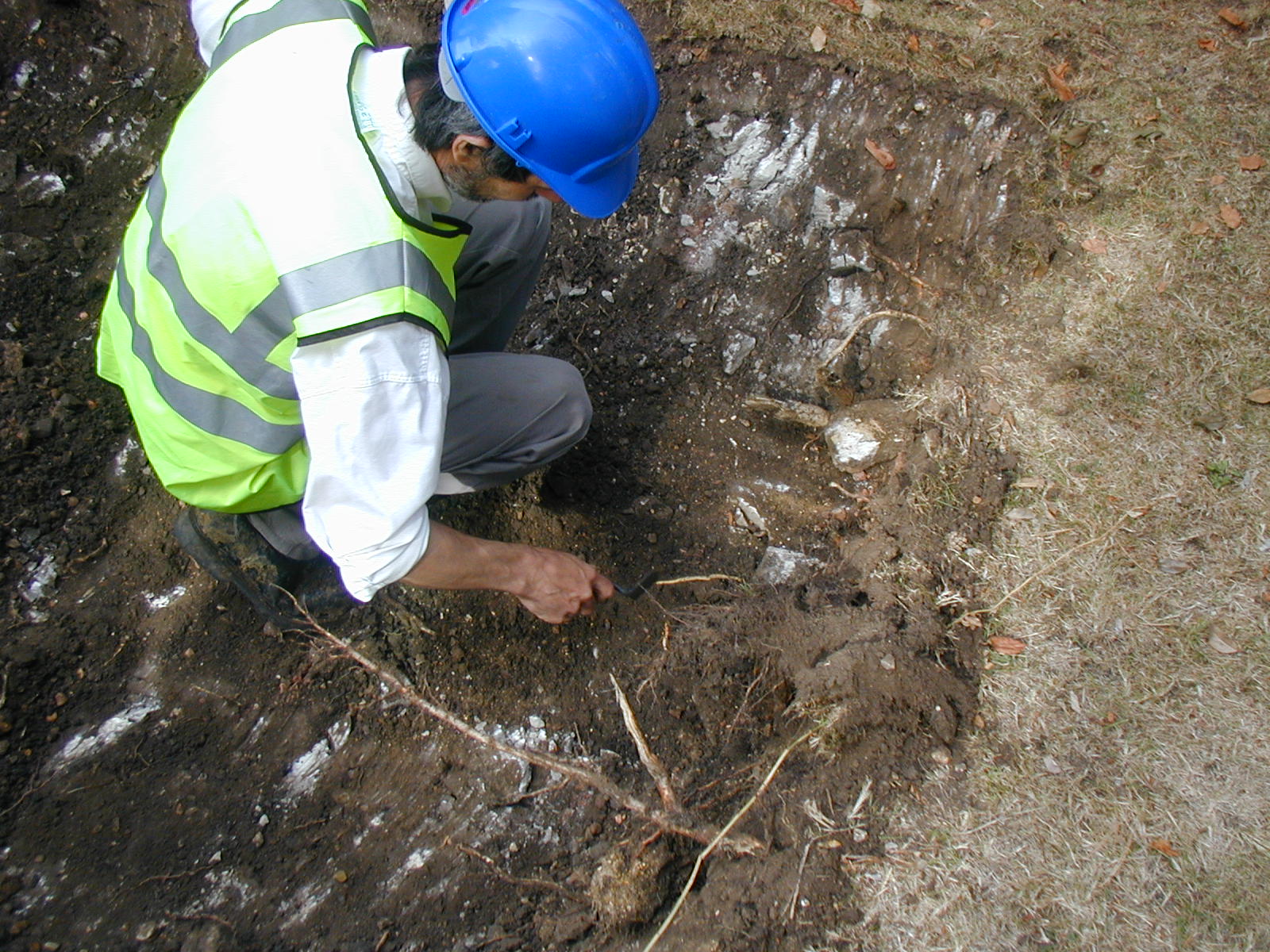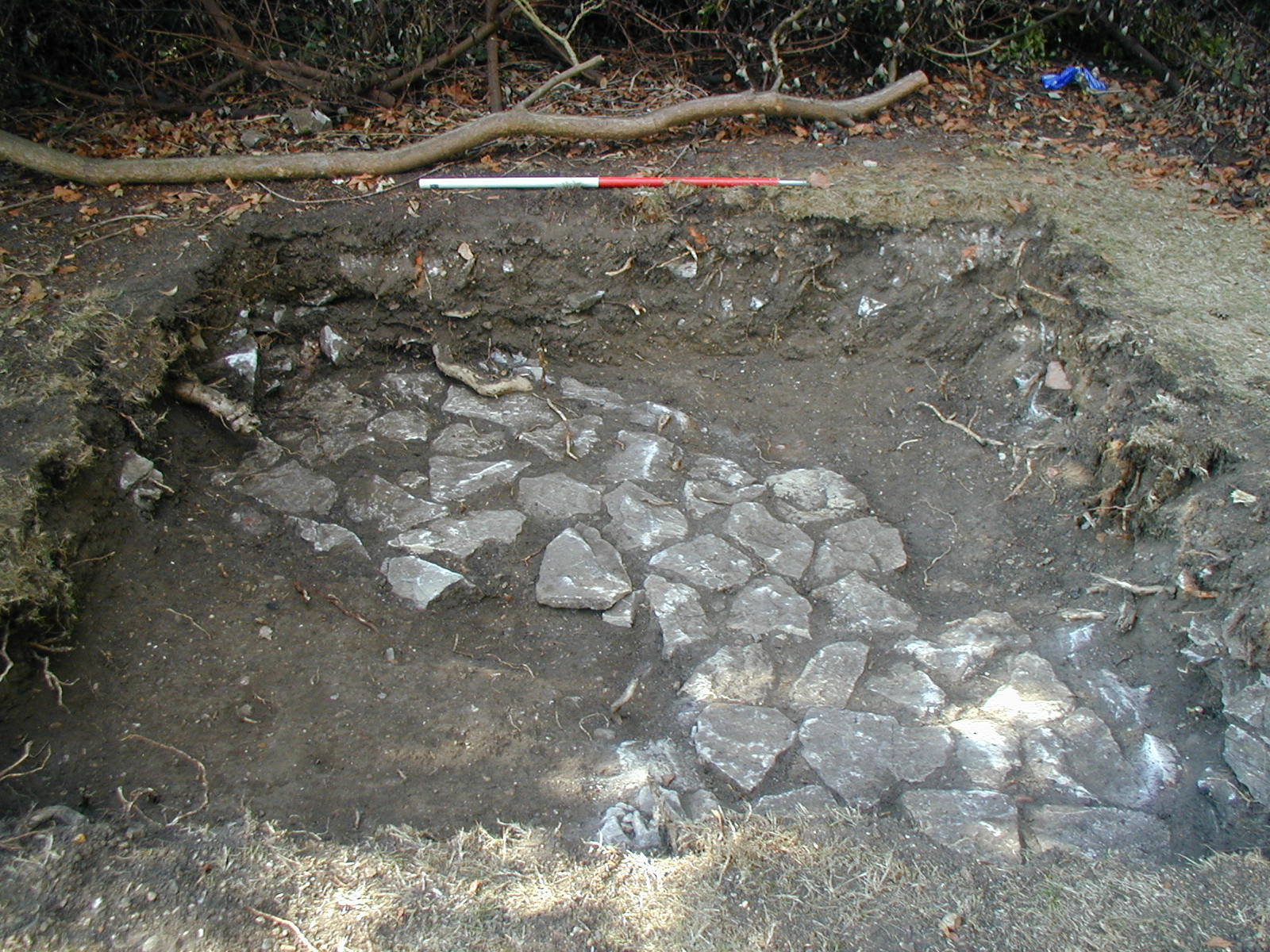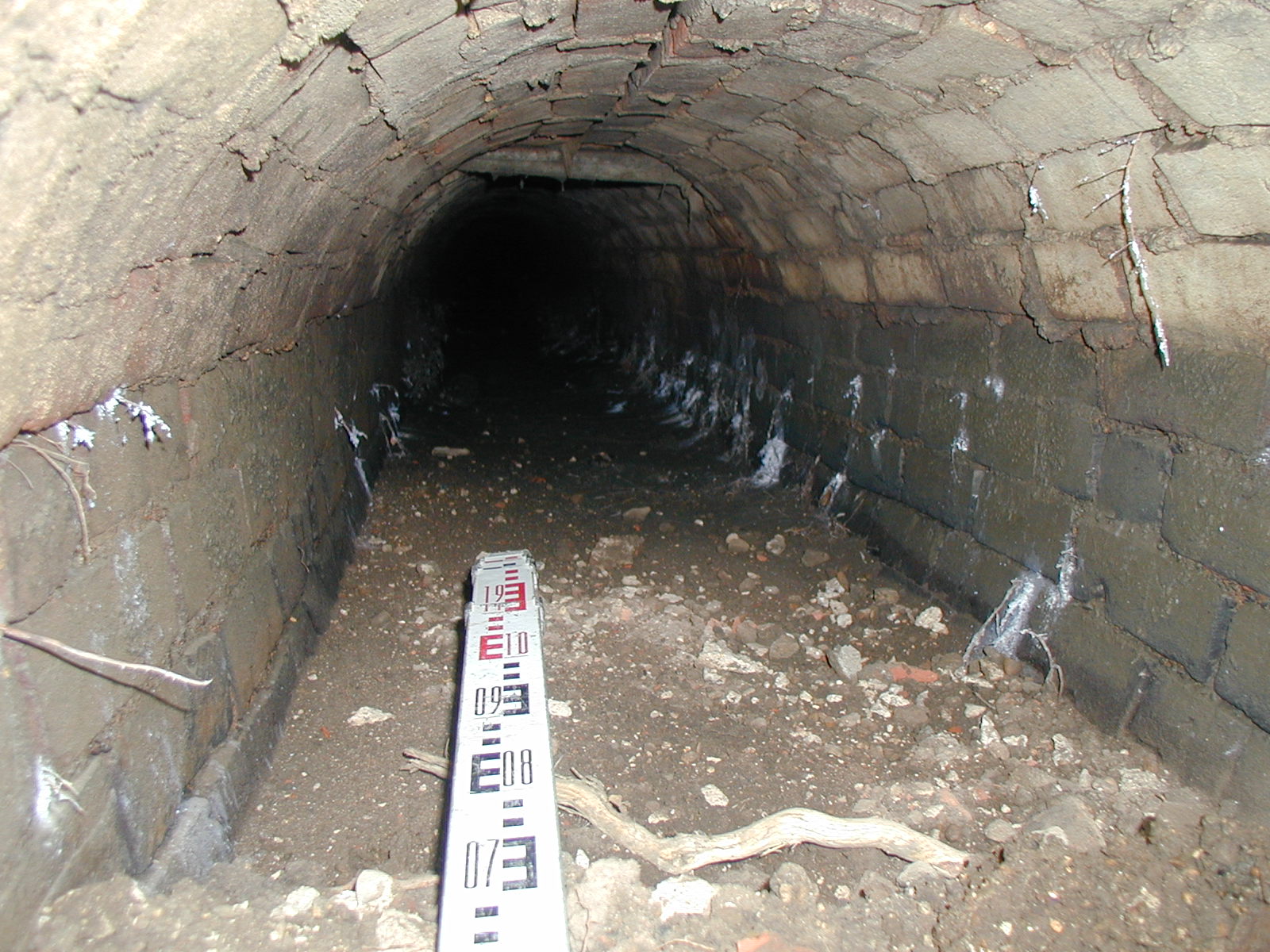Bedford Castle
Excavating the mound
Trial excavations on top of the mound showed it had been built up of layers of compacted rubble. Nothing was found of the buildings which once crowned the high point of the castle, but we did get pottery dating from the late 11th century, when the castle was built. The geophysical survey showed a line running in a rough circle about 8m inside the rim of the mound. Could this be the shell keep wall, enclosing a smaller stone keep?
The mound has been modified and re-used many times over the years. From the 16th century, its flat top was used as a bowling green. A fragment of a white ceramic bowling ‘jack’ is an unusual archaeological find from the south side of the mound.
The Ice-House
The 19th-century icehouse, under the northern part of the mound, was emptied out. It has a central well over 4m deep, and must once have held enough ice for all the inns in Bedford.
Castle Lane
The Council asked Albion Archaeology to prepare an up-to-date report on the archaeology for the benefit of architects entering the RIBA Castle Lane design competition, launched in February 2004. A desk-based study was carried out of the car parks. This area was once occupied by the inner and outer baileys – the busiest parts of the castle. It’s amazing to think that under the tarmac is one of the richest archaeological sites in the country!
Modelling the Castle
To assess the significance of buried archaeological layers, we constructed a ‘digital deposit model’ using information acquired from the 1970s excavations. This model plots in three dimensions, all walls, moats and other features known to exist under the ground, so their location can now be viewed at the touch of a button.



